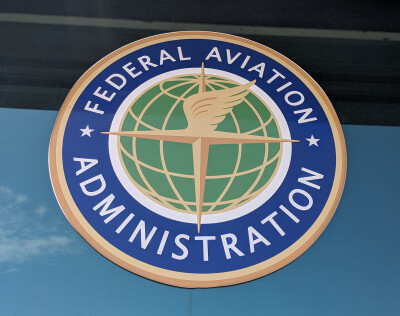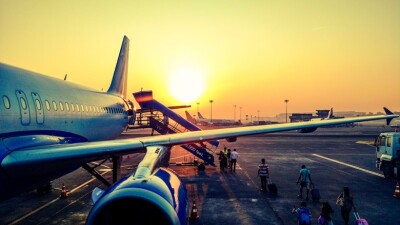Since the summer of 2016, the uncrewed aviation industry has been conducting business and growing steadily under the Federal Aviation Administration (FAA) regulation known as Part 107. This milestone accomplishment allowed an unregulated activity (flying drones in the National Airspace – NAS) to have clear rules and guidelines, which are necessary in every modern endeavor.
Part 107 has, nonetheless, a big caveat, it restricts flights to the visual range of the operator of the unmanned aerial vehicle (UAV) and also establishes strict parameters in terms of weight of the aircraft and altitude of flight. Almost immediately that Part 107 became the law of the land, everyone began talking about (and asking for) flights beyond visual line of sight (BVLOS) and this ever-present discussion put pressure on the FAA to setup an Aviation Rulemaking Committee (ARC) to gather the viewpoint of presumably every stakeholder in the industry.
This specific ARC presented its final report on March 10, 2022, which means that just a few weeks ago we celebrated the second anniversary of this important document in which over 70 organizations collaborated for months to create a set of recommendations to the FAA on how to regulate UAV BVLOS flights.
In the Executive Summary of the 79-page report, a new key acronym was introduced, Acceptable Level of Risk (ALR) and for most people involved in the ARC exhaustive exercise, this was the most important conclusion.
According to the document: “The ARC recommends that the FAA set an acceptable level of risk (ALR) for UAS that is consistent across all types of operations being performed. The ARC envisions that this approach will allow the FAA to adopt a common and consistent set of regulations and guidance, giving operators the flexibility to meet the ALR through qualitative or quantitative methods, or a hybrid approach.”
It is an important recognition of the fact that it will be impossible to integrate crewed and uncrewed aviation in 100% safe conditions and therefore, the establishment of an ALR is imperative to move forward with the regulation.
The report also recognizes that current regulations covering operations at low altitudes of crewed aviation known as 91.113 would have to be amended in order to accommodate uncrewed aviation integration. The current version of 91.113 only recognizes the existence of balloons, gliders, powered parachutes, weight-shift-control aircraft, airplanes, airships and rotorcrafts, no mention of uncrewed aviation.
The ARC report makes the following recommendations to amend 91.113 based on the availability of ADS-B (automatic dependent surveillance and broadcast) and TABS (traffic awareness beacon system) onboard crewed aircraft:
- Allow automatic means for see-and-avoid responsibility.
- Give UA right of way in Shielded Areas.
- Give UA right of way over crewed aircraft that are not equipped with ADS-B or TABS in Non-Shielded Low Altitude Areas.
- Give crewed aircraft that are equipped with ADS-B or TABS (and broadcasting their position) right of way in Non-Shielded Low Altitude Areas.
This is an important set of recommendations because it can be the determining factor in case of midair collisions between drones and traditional aircraft. For example, in the recent midair collision between a helicopter and a drone in the vicinity of the Daytona Beach International Airport (KDAB) both the FAA and the National Transportation Safety Board (NTSB) lacked the basic legal framework to determine which aircraft had the right of way and therefore it had to rely on the Certificate of Waiver or Authorization (COA) that restricted the drone to a maximum altitude of 150 feet and the existing NOTAM (Notice to Aviators) that restricted the helicopter from flying above 200 ft of the affected zone.
In other words, today we have legally registered aircraft in both crewed and uncrewed categories but do not have the necessary legal parameters to determine which one has the right of way at low altitudes. We have de facto created a situation in which these two types of aircraft operate in close proximity without the proper legal framework to determine who is at fault in case of an accident and that is inherently ambiguous, especially for insurance purposes.
So, the big question is when are we having the BVLOS regulation?
The process is well known to almost everyone in the aviation community; first the FAA must publish what is known as NPRM (Notice of Public Rulemaking) and then after months of consultations, the final ruling is officially released. The industry has adopted Part 108 as the unofficial name of the BVLOS regulation, so we will call it that from now on.
As to when we will have Part 108, during the most recent Commercial UAV Expo in Las Vegas, representatives of the FAA hinted that it would be the end of summer 2024 when the federal agency is planning to release the NPRM. Perhaps during the upcoming Commercial UAV Expo in Las Vegas this September, our FAA friends will be in a position to give us a better forecast.
In the meantime, optimistically we are looking at 2025 for the official release of Part 108 and we cannot wait for the day that crewed and uncrewed aircraft can share the NAS in a safe ALR! This new way of conducting non-pilot operations will be a key determining factor in plotting the future of our exciting industry. We look forward to that day.















Comments